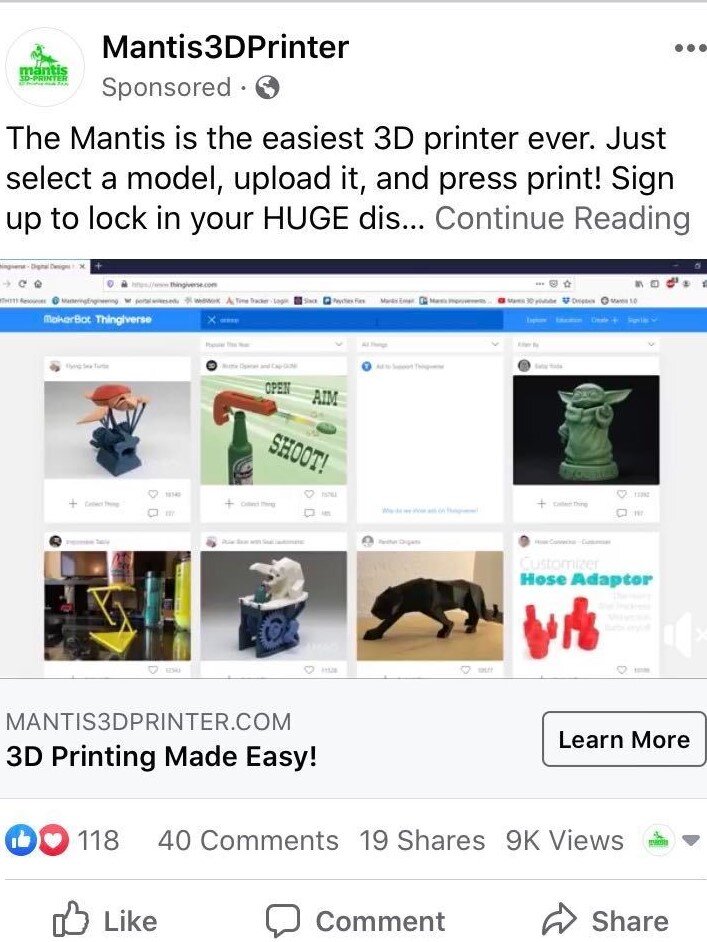Yikes… who would have thought 2020 would throw us this many curve balls? Global pandemic? Check. Global recession? Check. Social unrest and riots in the streets? Check and check.
I spent some time today poking around for a quote to sum up how our team managed these past few months. This one seemed the most fitting.
We will either find a way or make one.
— Hannibal (247-182 BC), Carthaginian General
I can’t say we weren’t a bit uneasy mid-March but when all of our trade show plans evaporated thanks to COVID-19, we were fortunate enough to find a cause worth sinking our teeth into. Designing and building personal protective equipment for local health care and front line workers managed to fill the lull. We spent months working alongside other local manufacturers and organizations to make a positive impact and that meant the world to us.
After exhausting our internal stock pile of filament on face shields, we switched our attention to ramping up our Alpha tester program to further improve the Mantis. This was a huge success in our book. We were able to keep our team working throughout the lockdown and our remote Alpha users provided an immense amount of useful feedback.
Tim, one of our many knowledgeable Alpha users, discusses design improvements which are now reflected in Mantis 1.0
Taking the feedback received from our Alpha testers, we began working on what the team began calling Mantis 1.0 — the first truly turnkey version of the Mantis. Version 1.0 took us a couple of months to cobble together given our supply chain was in shambles, but between runs to local hardware stores and Walmart for disinfectant spray, we were able to piece together everything we needed.
Mantis 1.0
Mantis 1.0 now includes an improved power supply, a vastly improved cooling system, and a feature rich intuitive user interface unmatched by our competition. After finalizing the Mantis 1.0 design, we switched to marketing and business development. That meant kicking off a pre-Kickstarter with Facebook ads as well as developing our pitch for a local business plan competition.
Both of these endeavors paid off. We’ve gained more and more followers and we achieved first place in the competition, which resulted in a cash investment to grow our business.
Most recently we’ve started offering the Mantis 1.0 to a select group of highly qualified followers who believe in our vision and the need for an easy to use 3D printer. If you’d like to be one of the first to get your hands on a Mantis 1.0, shoot me an email — joe@mantis3dprinter.com
It’s been a whirlwind year so far but things are finally starting to look up. To all of our supporters, we are eternally grateful. Your support means the world.
- Joe, Founder of Verde Mantis
Stay tuned for upcoming posts where I’ll be laying out how our Mantis 3D Printer is making our customers money with the press of a button.
Interested in joining the Mantis family? Start by buying your Mantis 3D Printer today.
Stay tuned for our next post and to be notified or leave a comment, follow us on social media.
Instagram: @mantis3dprinter
Twitter: @mantis3dprinter
Facebook: @mantis3dprinter
LinkenIn: Verde Mantis, LP
















